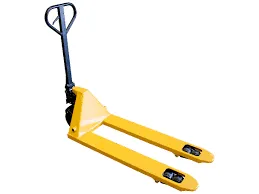


Understanding Chain Block Design in Structural Engineering
Chain block design is an important concept in structural engineering, particularly when it comes to lifting and moving heavy loads. This innovative system plays a crucial role in various industries, from construction to manufacturing, where heavy lifting is a daily requirement. Understanding the fundamental principles of chain blocks and their design mechanisms can greatly enhance safety and efficiency in operational processes.
At its core, a chain block, often referred to as a chain hoist, is a mechanical device that uses a chain to lift heavy objects. The design of a chain block typically consists of several key components, including a lift wheel, a hook, a chain, and a frame. The lift wheel, which is powered by manual or electrical means, is responsible for rotating and lifting the load. The hook serves as the attachment point for the load, while the chain is the critical element that transfers the force generated by lifting to the load itself.
One of the significant advantages of chain blocks is their simplicity in design and operation. The mechanism often relies on a system of gears and pulleys to multiply the force applied, allowing a user to lift weights that far exceed their physical capability. This mechanical advantage is often quantified by the gear ratio, which can greatly influence the efficiency of the lifting process. A greater gear ratio allows for less input force needed to lift heavier loads, making chain blocks especially useful in heavy-duty applications.
Safety considerations are paramount in chain block design
. Given the potential hazards associated with lifting heavy loads, chain blocks must be designed to endure significant stress while ensuring user safety. High-quality materials are typically used to construct each component, providing durability and stability. Additionally, features such as overload protection and safety latches are integrated into modern designs to prevent accidents caused by excessive weight or equipment failure.
In terms of versatility, chain blocks come in various designs suited for specific applications. Manual chain hoists are popular for their simplicity and low cost, making them ideal for smaller operations and remote locations where electrical outlets may not be accessible. Conversely, electric chain hoists are designed for larger capacities and provide the convenience of automated lifting, thereby reducing the need for manual effort and increasing productivity.
The design of chain blocks also takes into account the environment in which they will operate. For example, hoists used in corrosive environments may require additional protective coatings or be constructed from stainless steel to prevent deterioration. Similarly, lightweight materials may be favored in environments where mobility and ease of transport are priorities.
Furthermore, the advancements in technology have led to the development of smart chain blocks equipped with sensors and IoT capabilities. These modern devices can monitor load weight, track usage patterns, and provide real-time feedback to operators, enhancing both safety and efficiency. By integrating these smart technologies, industries can optimize their lifting processes and make informed decisions regarding equipment maintenance and safety checks.
In summary, chain block design is a multifaceted topic within the realm of structural engineering. It embodies the principles of mechanical advantage and safety while being adaptable to various environments and applications. As industries continue to evolve and demand higher standards of safety and efficiency, the design and functionality of chain blocks will likely progress even further, incorporating innovative technologies that enhance performance and reliability. Understanding the principles behind chain block design not only aids in selecting the right equipment for specific tasks but also contributes to safer working environments in the many fields where these crucial tools are employed.



